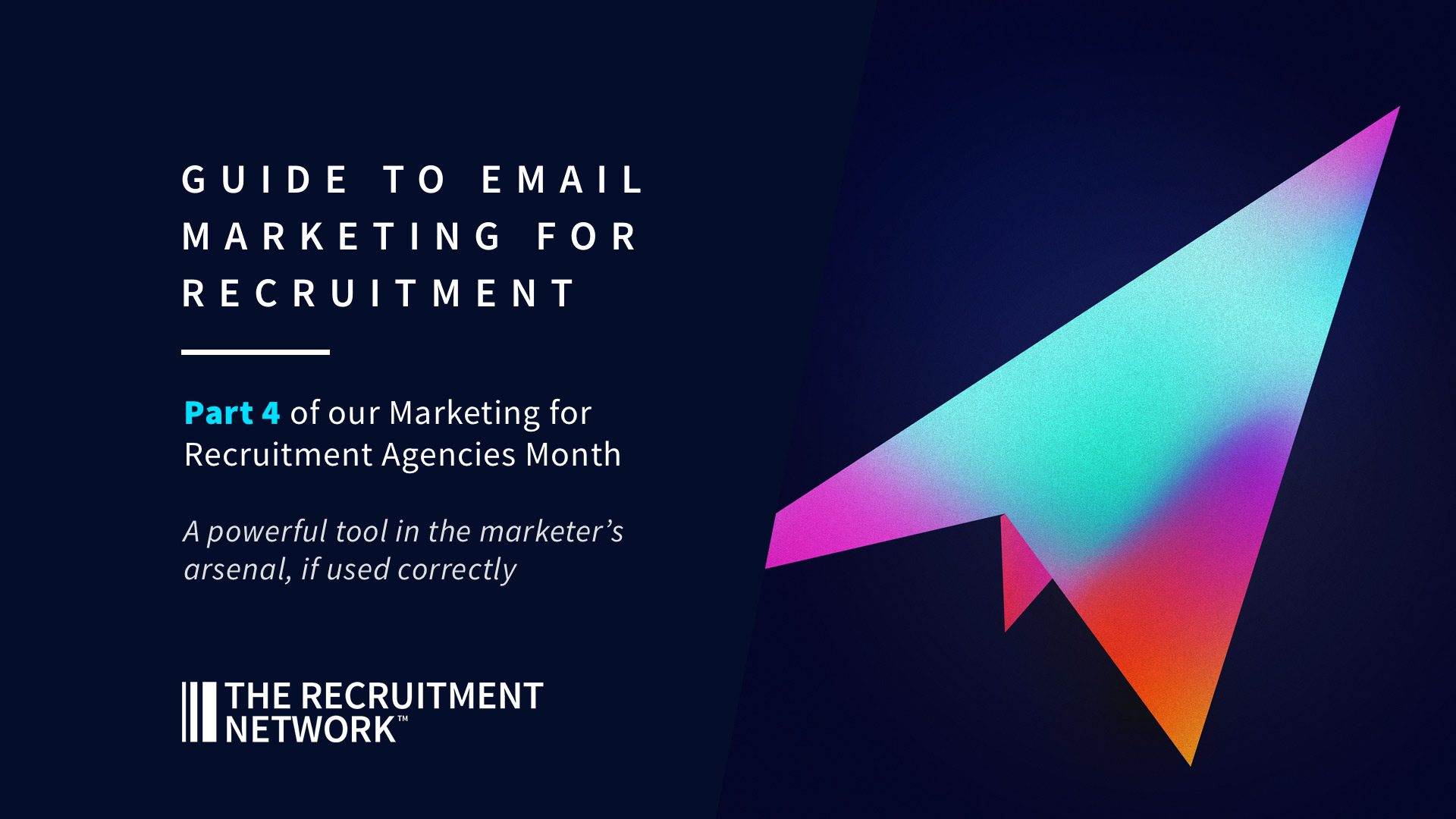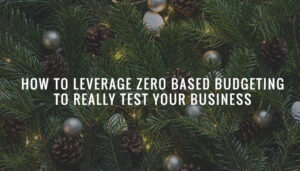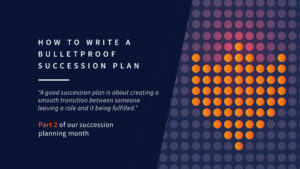Email marketing is a powerful tool in the marketer’s arsenal, if used correctly. There aren’t many platforms out there where you call the terms on what you want to do and show.Email marketing is a powerful tool in the marketer’s arsenal, if used correctly. There aren’t many platforms out there where you call the terms on what you want to do and show. Email marketing is advantageous because, if opened, you have the viewers’ attention which will lead to only your CTA’s, couple that with contacting large databases of your interested audience (That want to receive your emails) and you’ve got a tool that can drive lots of traffic to your website which can potentially convert.
There are many do’s and don’ts surrounding email marketing, so we wanted to give you a ‘how to’ guide which we will go through the do’s and don’ts with you, to ensure that you get the most out of your email campaigns.
How to create a successful email marketing strategy & campaign
Strategy comes first and as with any strategy plan, you need to know what you’re aiming for and what success looks like.
Deciding what it is you want to get out of your email marketing campaign is important. These aims could be as simple as ‘to drive traffic to your website’ or they could be more detailed and targeted like ‘to achieve x number of clicks on y area of the email’, but generally speaking the more detail the better.
Benchmarking against industry standards
According to Smart Insights the industry standard for recruitment and staffing businesses’ email campaigns are:
| Open Rate | Click Through Rate (CTR) | Soft Bounce (out of office etc.) | Hard Bounce (undelivered) | Abuse (reported) | Unsubscribes |
| 20.73% | 2.18% | 0.53% | 0.6% | 0.02% | 0.32% |
Lower than you thought? If you think about this in terms of social media, and how many people your individual posts reach and how few comments or likes some of your posts achieve, these stats suddenly look more appealing.
So, now we have an idea about where the figures should be, we can benchmark what good looks like. To start with we can benchmark against these figures but following on from this your aims and objectives for your email marketing campaign should come from your previous emails.
Building your mailing list
To kickstart your marketing campaign you need to have a list of email contacts who are willing to receive your emails, so how do you build this list up from nothing?
Well, to start with you will likely have some contacts or previous customers who would be interested to hear about what you are up to, so start here.
Do make sure that you ask for permission to add the person’s details to your mailing list, as this will mean they are less likely to unsubscribe or report you for adding them without their permission. This will become rally important to remember especially when GDPR kicks in this year.
So now you have a starting list you need to ensure that you continue to build on this as you go. It will take some time to build up, and large mailing lists are not build overnight.
Building a list comes full-circle with your other marketing efforts, the best way to build your list will be through a sign-up form on your website, there are two ways you can position your form, the 1st one is a simple form asking for information to sign up to your mailing database. The 2ndway is a form which works like an exchange, contact details for something of inherent value, think Webinars, eBooks, Premium Content, etc..
A fantastic inbound strategy will always try to collect the contact details of their audience, we spoke about Inbound in our recent strategy blog.
It’s important to separate your list into different clientele, depending on who they are, or what they are likely to be interested in. Having one list for clients and one for candidates, or maybe for the different sectors that you recruit for is a good idea, so you can send emails that are more personalised to them.Building the actual email & Apps to use
So, you have built up your mailing list, but now you need to build the emails to send out. There are many applications out there to use which will help you manage your mailing lists and build your emails with a drag and drop style. We’ll go through a few of them now…
Mailchimp
One of the most popular on the market is Mailchimp. It’s a great system and is free to use up to 2000 contacts and 12,000 emails a month, which is plenty to get started with. After this there is a scale for more contacts and unlimited emails. The easy-to-use platform, with the drag and drop style interface is great for beginners and is really intuitive.
Get Response
The one that we use is Get Response, and we really rate it. The drag and drop style email builder is great and really easy to use. While you build the email, you can also see what it will look like on a smart phone too, which is an excellent feature, especially if a large part of your audience will be on mobile technology.
Pricing levels
AWeber
AWeber is a great, user friendly, intuitive platform to use. It integrates with WordPress, Facebook and PayPal which can be useful. The templates are really good and don’t feel as templatey as some other platforms.
Starting at $19 per month for 0-500 contacts with unlimited emails, AWeber is reasonably priced compared to the competitors.
Autopilot
With a whiteboard style layout you’re able to create multi-channel messaging journeys in Autopilot. It also has the added benefit of being able to send SMS and in-app message too, which is a great feature of this one.
For the base level at up to 1000 email contacts and unlimited emails/messages Autopilot starts at $25 ($20 if paid yearly), which is a good price, and cheaper than some others.
Comparable Packages of these Platforms
| Platform | Contacts | Email Send Limit | Price | Features |
| Mailchimp | 1000-1500 | Unlimited | $20/month | Based on ‘Growing Business’ package |
| Get Response | 1000 | Unlimited | £10/month | Less features- Pro package is 5000 contacts at £32/month |
| AWeber | 500-2500 | Unlimited | $29/month | Sliding scale based on number of contacts |
| Autopilot | 1000 | Unlimited | $25/month | Base package so doesn’t have all features- Business package is $50/month for 1000 contacts |
All of these packages above have varying levels of features, but these are the base packages and are a good starting point. Each platform will appeal to different companies for different reasons, so some research into the specific platforms is advised.
Email Marketing Strategy
Designing the actual email
As we have mentioned in the previous section, a lot of the email platforms that you can use have a drag and drop style to them and are really user friendly, you don’t need to be a coding genius to work with them.
Some key components to include in your email are:
- Subject line- don’t try to sell your product/email here. Descriptive lines about what is included in the email work well. In terms of length, short snappy subject lines are good or longer ones. Less than 40 characters or more than 70 are best.
- Text- what you actually say in the email is important. You should not over do the text in your email but more think about driving traffic to your website where all the details are.
- Images- these are great to attract the readers attention. Bring them in with images and use complimentary text to pass on the information you need to entice them to visit your website, or call.
- Call to actions- a call to action is a ‘click here’ or ‘call us now’ type action that prompts action from the reader. It is no good having an excellently design, beautiful email if it doesn’t lead anywhere or give them details of how to follow it up.
- Reasons to email- the email must have a purpose. We all know companies who just send email after email that you are not interested in and the first thing you do is unsubscribe from their mailing list. So, if you don’t want unsubscribes, then ensure you have a purpose.
Developing & Improving your Campaigns
Analytics
As we have mentioned earlier on, the key to success is to analyse your previous emails to gauge how well they are doing and the return you are getting from them, then improve on them from there.
If your open rates or click through rates are low (which you will only know if you analyse previous emails) then you need to change your tactics.
One way to test the effectiveness of an email in terms of its design is A/B testing. What we mean by this is to make two emails and send one to one half of your list, and a slightly different one to the other half. Then by analysing the results of this, it will give you an ideas of how well different email features work.
Examples of these could be:
- Varying colour schemes
- Call to action buttons/links- wording- click here vs find out more
- Less wording vs more wording
- Different images
- Completely different design
A/B Testing Email Examples
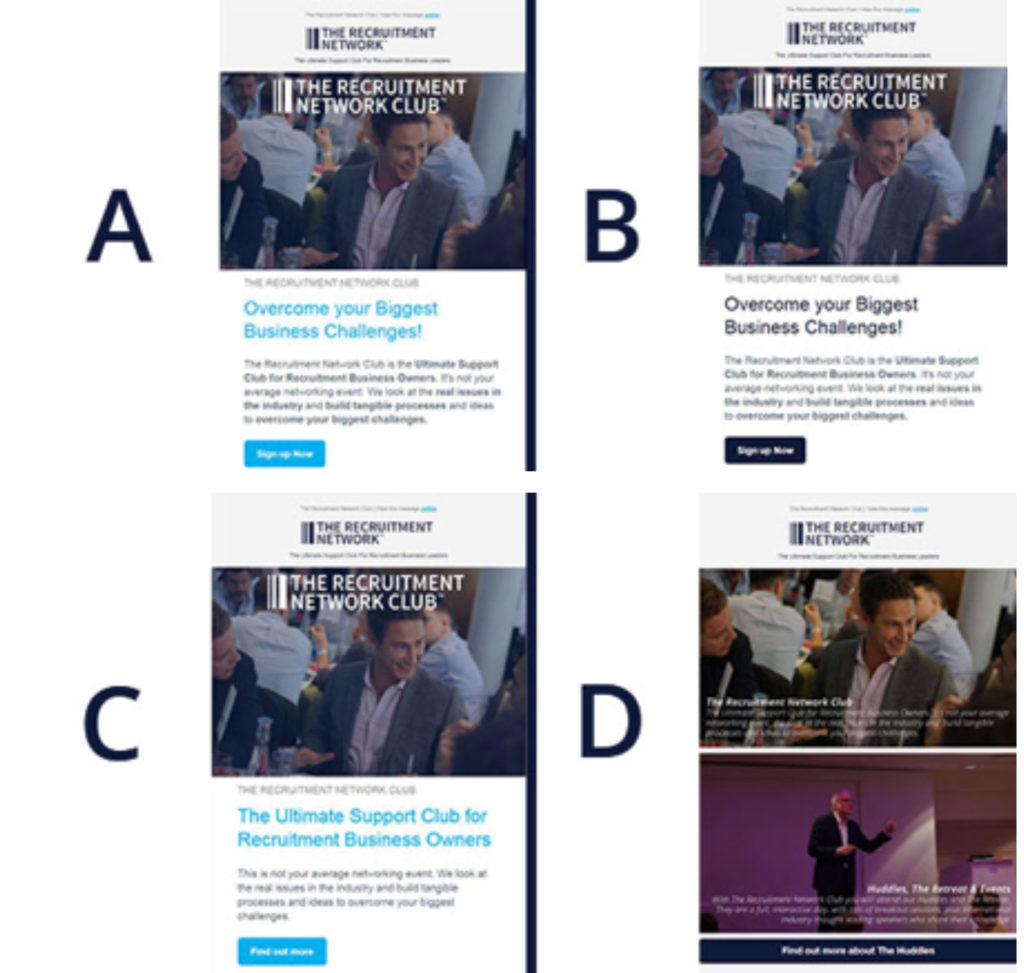
From colour and font to content and layout, A/B testing can wield some fascinating results
Knowing your audience to optimise the effectiveness of your email
To maximise your chances of getting the best open and CTRs you need to know your audience. By knowing and analysing your audience and their behaviours, you can tailor the emails to them.
Sending one off newsletters and the odd weekly or monthly update are one thing, but automation is definitely the way to get the most out of your email marketing. Email Marketing Automation is where you set up email campaigns which auto respond or start a workflow in response to a ‘sign up’ or new customer, for instance.
You can set up auto response or workflow emails depending on the circumstances under which that person signed up to your mailing list. The smartest of automation will be tailored towards these specific sign ups.
For example: reader signs up to your mailing list via a blog article. Previous to this sign up you would have your automation workflow ready to go and when they sign up it would trigger this to come into play. You can then have a series of emails that will go out that would be related to the topic of the blog that they signed up on, which lends to their interests.
Below we have mapped out an example workflow so that you can visualise what an automation workflow could look like:
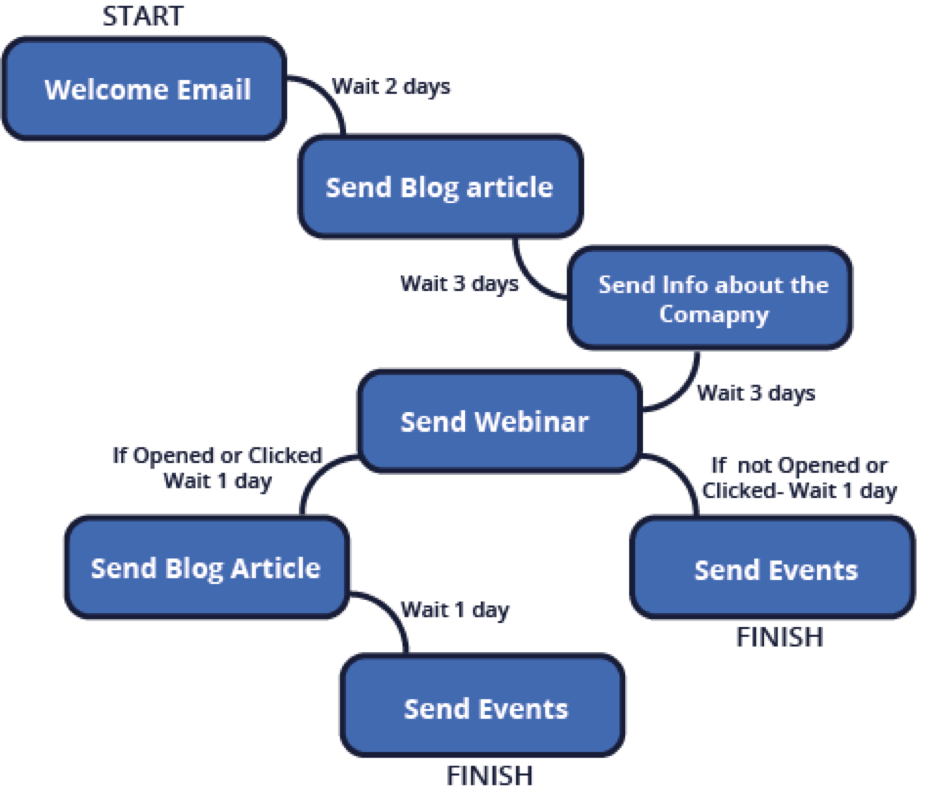
Automation workflows such as the one above can be tailored to nurture leads through your sales funnel. From converting leads to customers to upsells and evangelism with existing customers, it is useful for interaction with all of your potential and existing customer base.
Thinking about the triggers you will use to start your workflows will give you your starting points to building them. By mapping out what they would be interested in seeing from your company you can come up with some inventive and creative emails to send out, and the best thing is, it won’t mean more work for you, as it is automated.
Further developing your Email Marketing
Analysing the progress and the value of your emails that you send is vital to moving forward and developing your email marketing campaigns.
A few questions to ask yourself to help this are:
- What is the best time to send the email to them?
- What kind of device are they likely to be using?
- What content are they likely to engage with?
- What might they be interested in knowing more about?
- What would entice them into finding out more about your company?
To answer these questions, look back at the emails that you have already sent and evaluate which have had the higher open and CTRs and build on these.
So, we have covered the basics of email marketing in this article to get you started on the tracks to marketing success, but there is much more to it than this. These campaigns can always be analysed and built on, to make them even better, but that is something you need to do with your own campaigns to get the most out of it.
Share :
